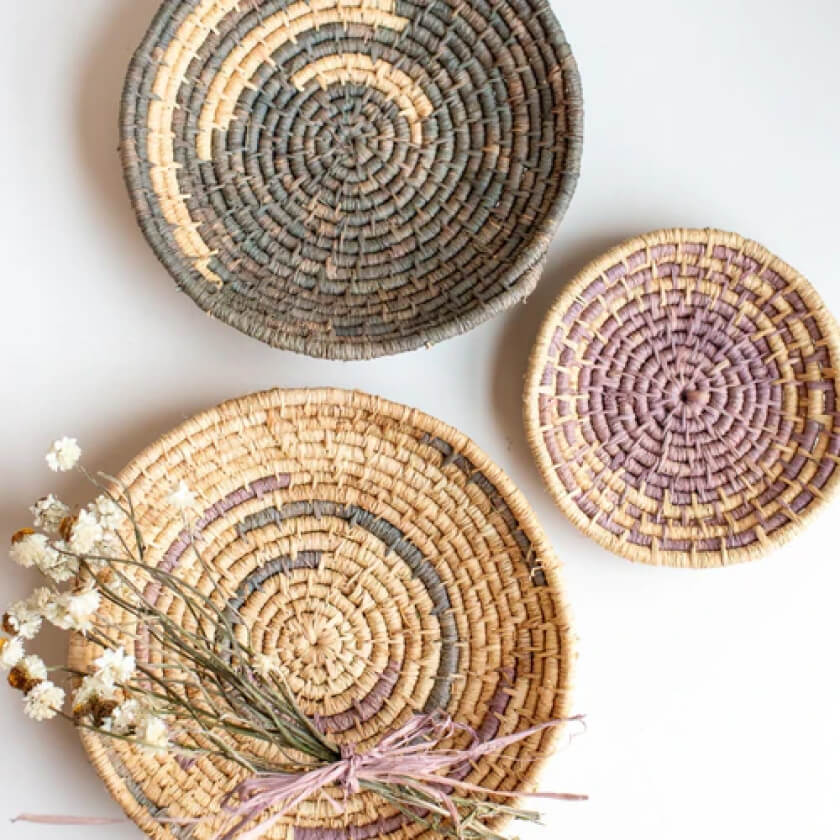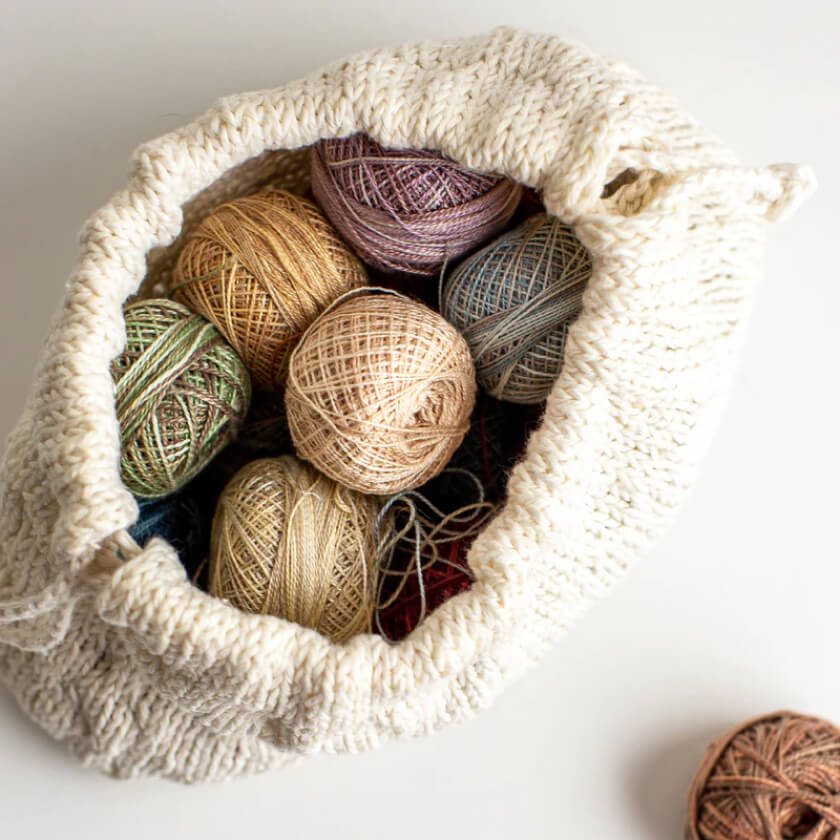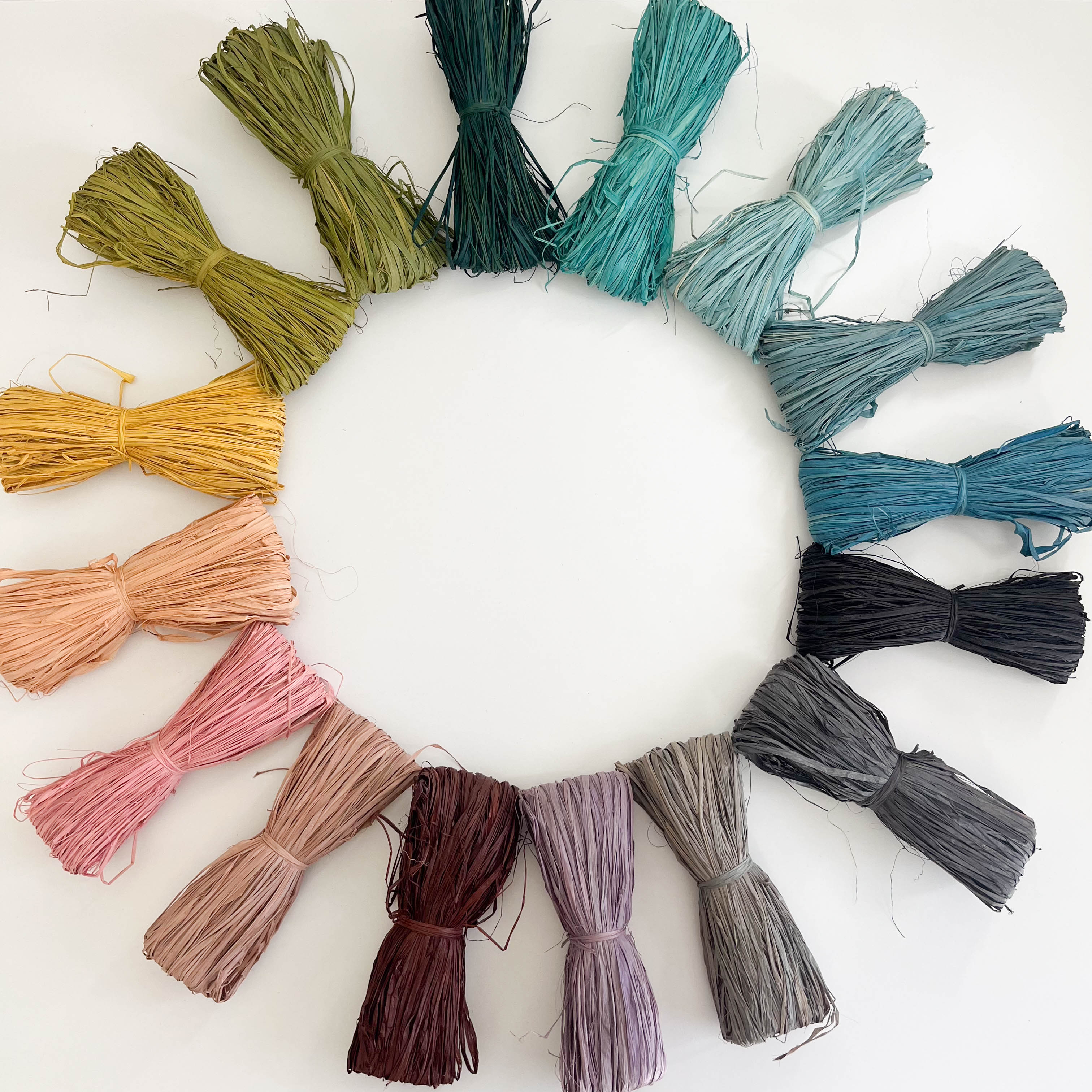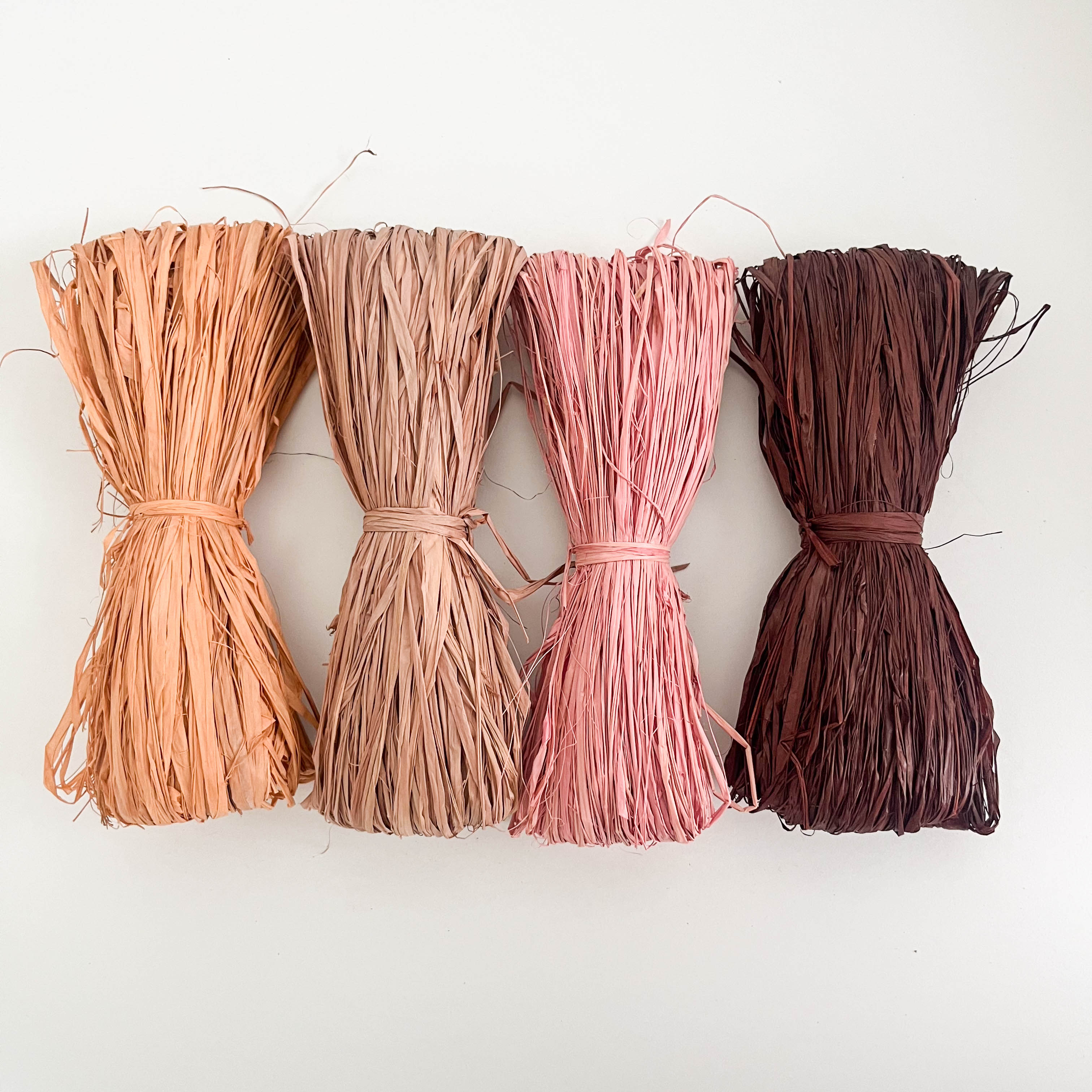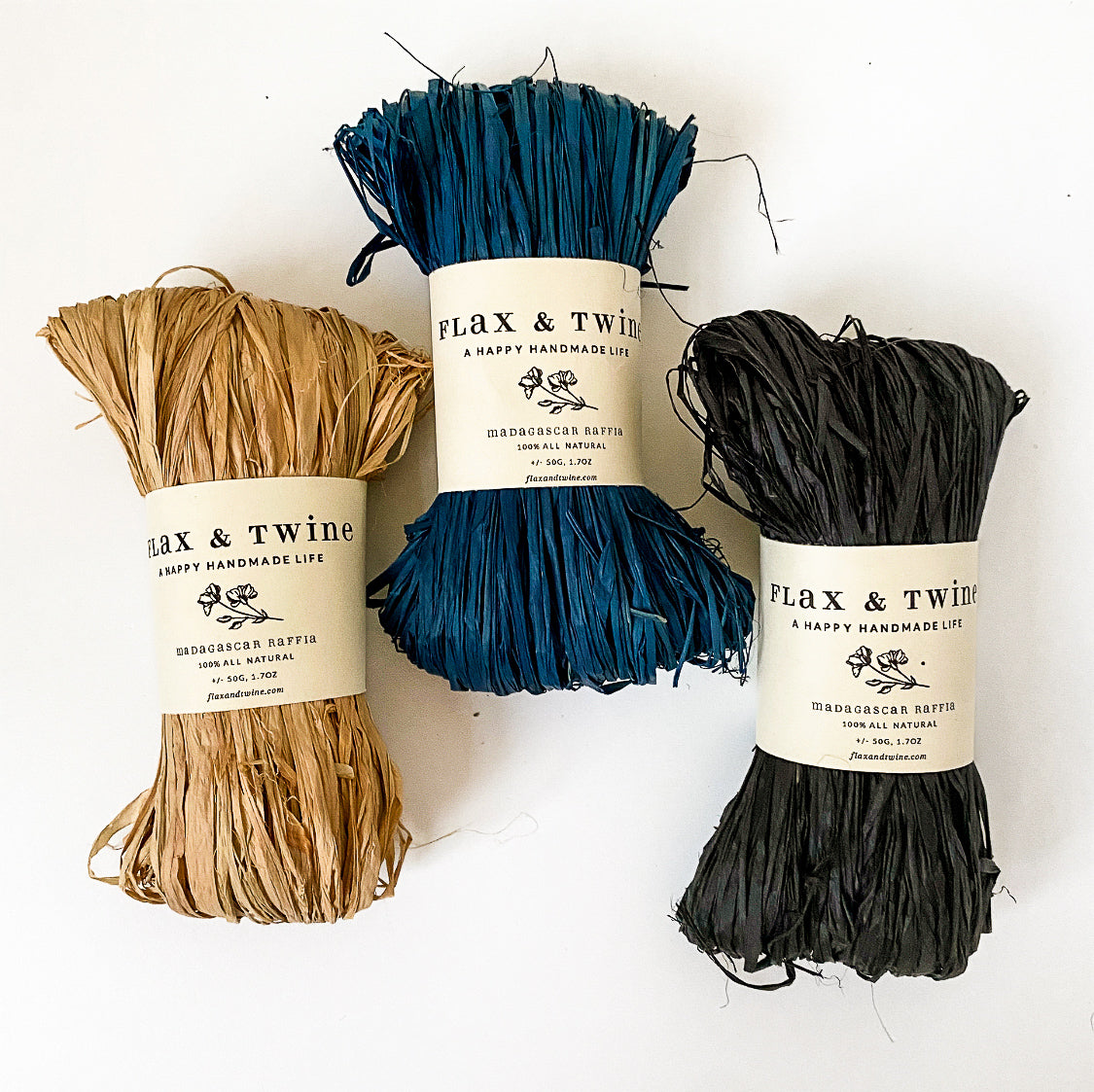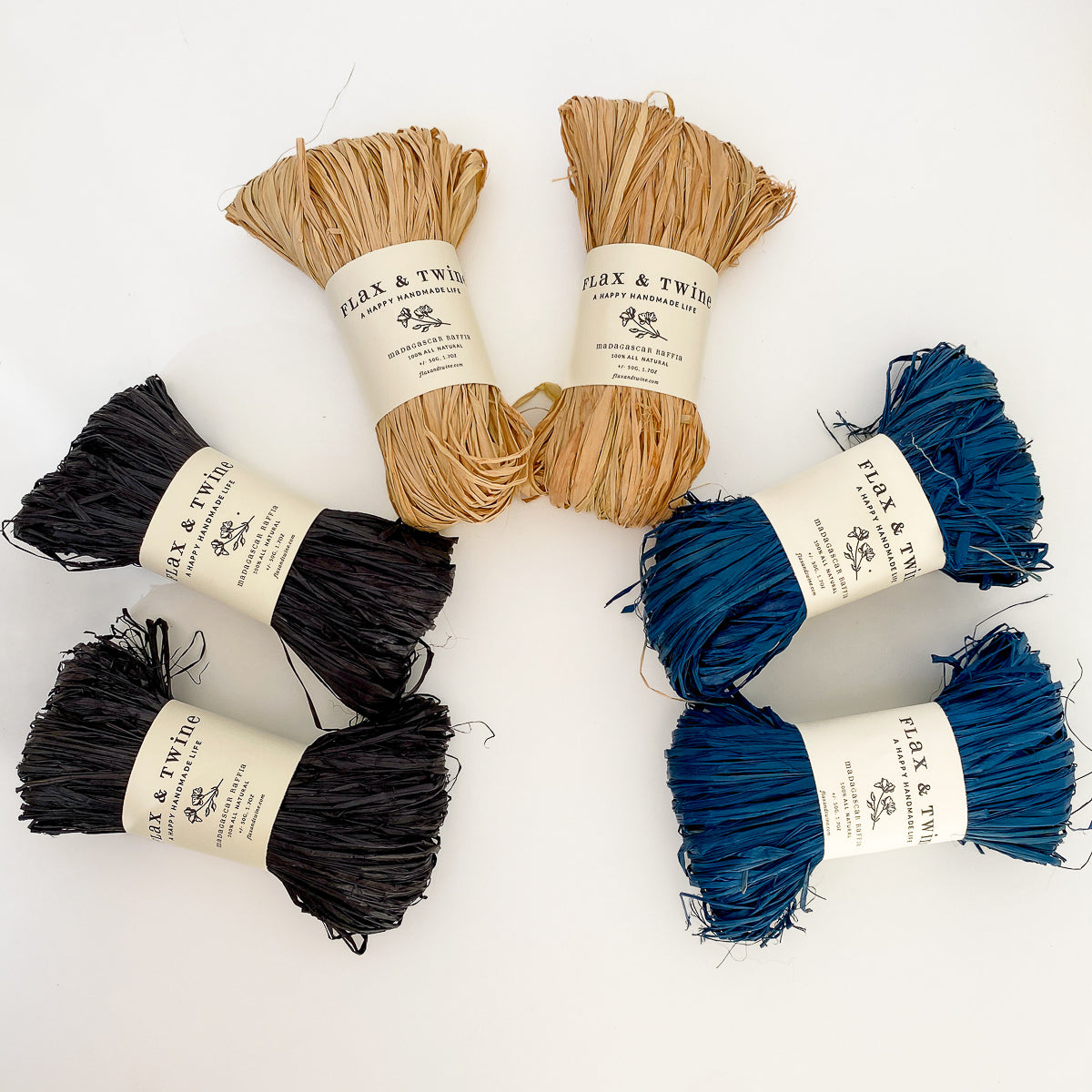Filters
Frequently Asked Questions
What is raffia made of?
Natural Raffia is made from the long, fibrous leaves of the raffia palm tree (Raphia farinifera), most commonly found in Madagascar. These leaves can measure up to 30 feet long. The strands are harvested, sun-dried, and bundled to create a natural material used in everything from basketry to traditional weaving to decorative touches. Raffia strands are flexible, durable, and loved for their earthy texture! Paper Raffia is made from 100% paper and is manufactured into a raffia yarn. It comes in a continuous length and provides a similar lightweight, organic feeling as traditional, natural raffia.
What is the meaning of raffia?
The word “raffia” comes from Malagasy and also names the palm tree and the fiber. It’s rooted in the local term rafia. The fibers are stripped from the plant’s leaves and dried for use in crafts. Over time, “raffia” has come to mean the flexible craft fiber product we love and use today. It’s both the botanical and crafting name.
Is raffia a good material?
Absolutely! Crafters love raffia because it’s a strong, flexible product that's easy to work with, not to mention eco-friendly. Raffia comes from the leaves of the raffia palm, which naturally regrow after harvesting. That process makes it biodegradable, renewable, and far less wasteful than synthetic fibers. It’s perfect for weaving with, using to make and weave baskets, gift wrap, use for cushioning in gift baskets and more. It’s a fabulous choice for makers who want both natural, organic beauty and sustainability.
Is raffia the same as straw?
No, raffia and straw aren’t the same. Straw comes from dried grain stalks, while raffia is a natural fiber from palm leaves. Raffia is more flexible and easier to shape, making it better for crafting. If you’re looking to create a handmade product, raffia offers more strength, durability, and flexibility than straw.
What country does natural raffia grow in?
Natural raffia primarily grows in Madagascar, where the climate is perfect for cultivating strong, flexible fibers. The raffia palm thrives in coastal and swampy areas, producing leaves that can grow up to 30 feet long, ideal for stripping into craft-ready strands. While smaller quantities grow in parts of West and Central Africa, Madagascar remains the top source of this high-quality natural product worldwide.
What happens when raffia gets wet?
Raffia does soften when wet, becoming more flexible and easier to manipulate.. Raffia does not like to stay saturated in water or stay moist, however, as it can develop mold. If raffia is super stiff, you can dampen it a bit by misting it to make it more supple, but it should air dry mostly all the way before you use it in a basket or in a project where it will be packed tightly against other fibers. For dyed natural raffia, some color may bleed, so it's best to test it before starting your product. Paper Raffia should not be submerged in water.


